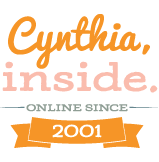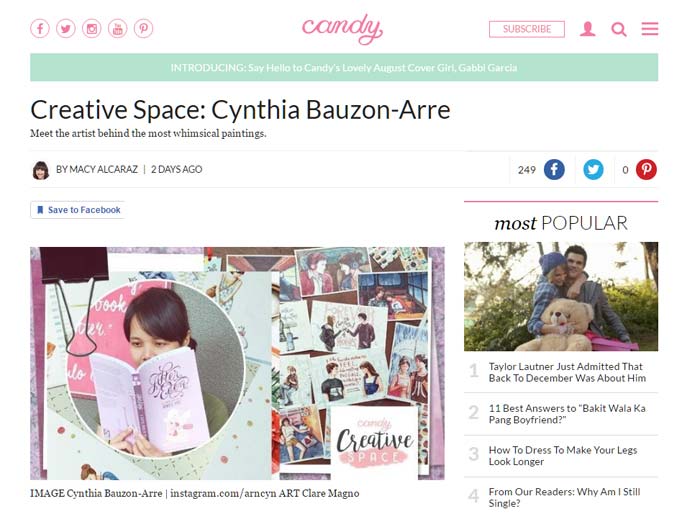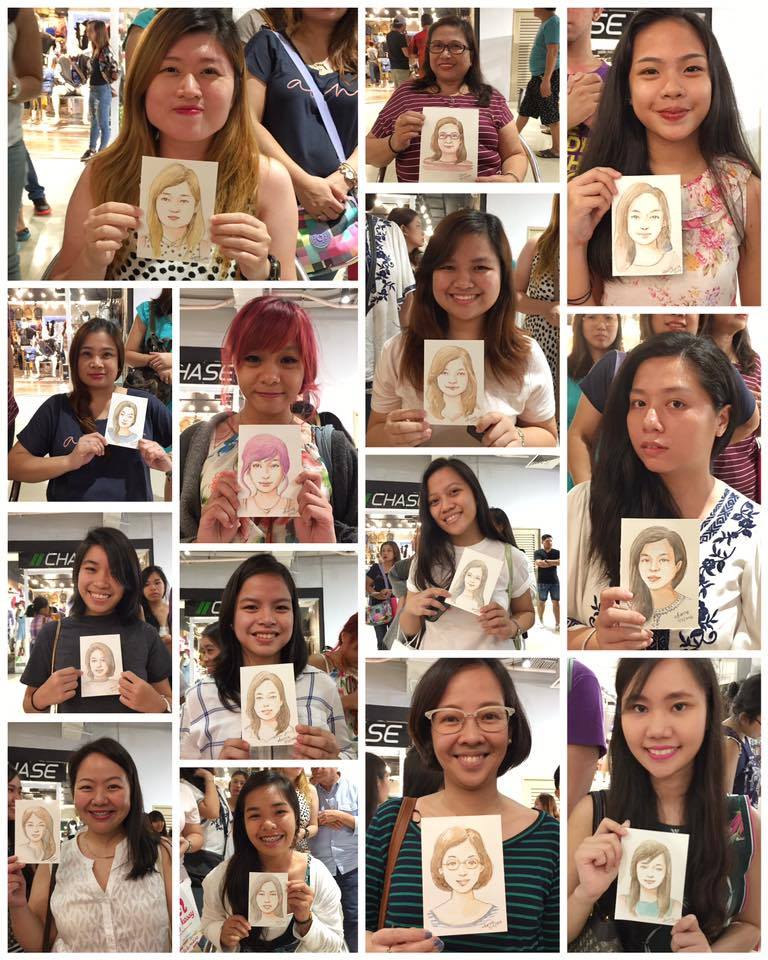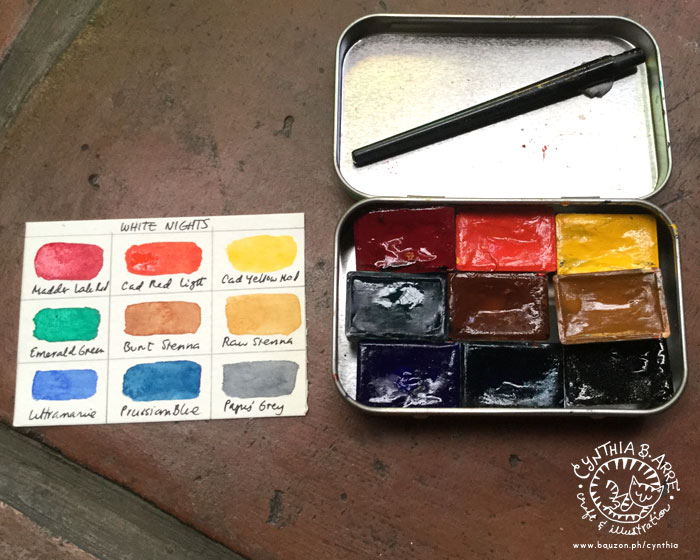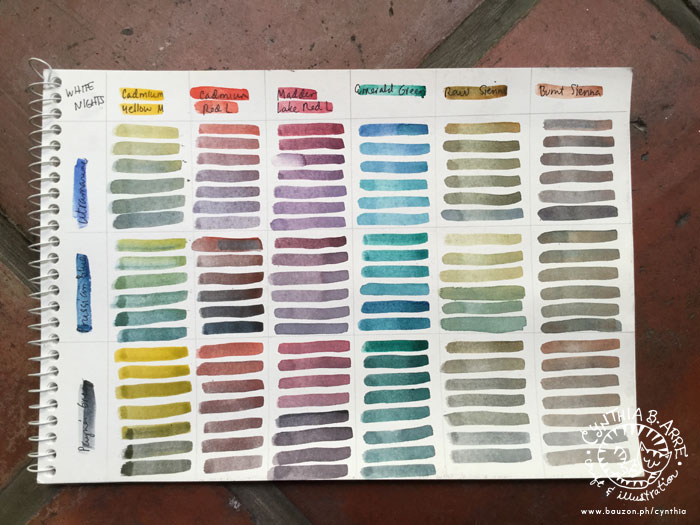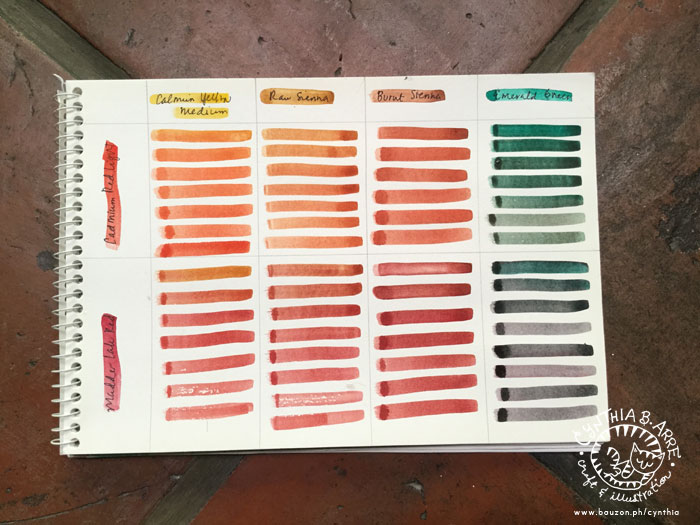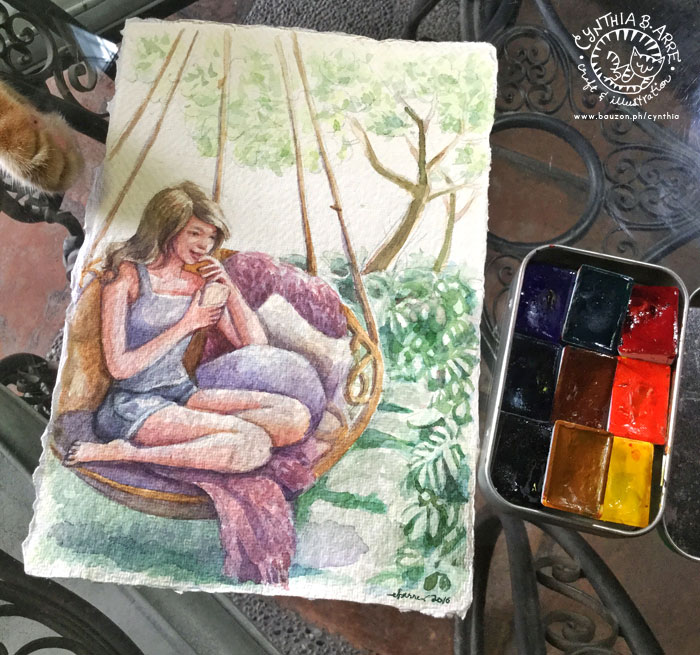I recently blogged about my watercolor paints and brushes in two parts — ONE / TWO
However, what good are those wonderful paints and brushes for without beautiful, high-quality paper? For daily practice work, inexpensive student quality pads like the Canson papers with the hot air balloon drawing on the cover that you can find at NBS and a Monologue Sketchbook (which I’ve also been abusing using) are great to have around but for commission work, it’s more appropriate to use paper that will allow illustrations to shine and last for a long time.
Here are some of my staples (so far) along with close-ups of samples of my illustrations using the different papers so that you can see their textures up close as well as how colors respond to them
.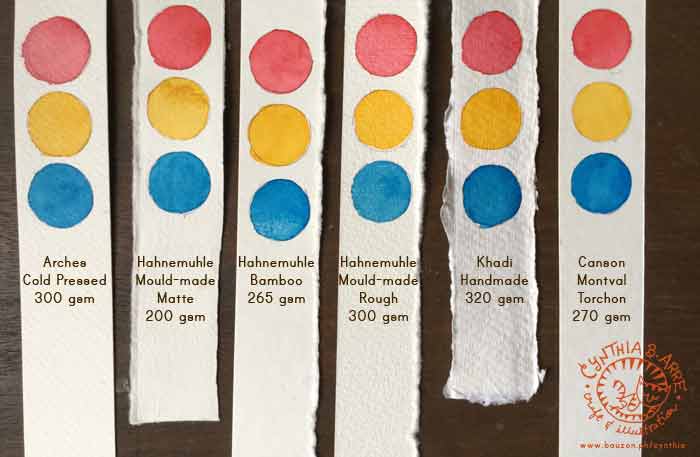
L-R and in no order of preference, these are the paper brands I keep going back to: Arches, Hahnemuhle, Khadi, and Canson. I’ve been hearing good things about Fabriano and Strathmore too but I have to wait for my shipment to arrive so I can try them out. The red, yellow, and blue paint I used for the comparison shot above are Shinhan PWC Permanent Red, Cadmium Yellow Deep, and Peacock Blue (from ArtWhale).
All of the above are acid-free and, save for Canson Montval Torchon which uses 100% cellulose, are fine artist quality papers made of natural fibers like cotton rag and bamboo in Hahnemuhle Bamboo Mixed Media Board’s case. Below are some notes:
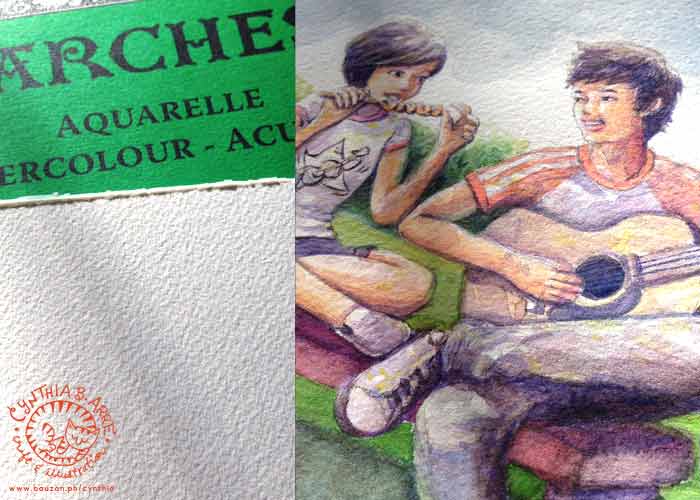
Arches Cold-Pressed Cotton Watercolor Paper, 300 gsm (available at NBS and some Fully Booked branches though I got mine from Amazon.com)
I prefer cold-pressed to hot-pressed watercolor papers because I love the rough texture which IMHO lends an organic feel. Arches 100% cotton paper has a nicely coarse “tooth” that seems to absorb pigments easily which allows colors to remain vibrant and intense. I’m also able to paint big juicy washes and draw fine details with minimal buckling, even when I don’t stretch the paper (which I really usually don’t, being lazy). At 300 gsm, it’s also thick enough to handle re-wetting with no visible damage when I make mistakes. 😛
***
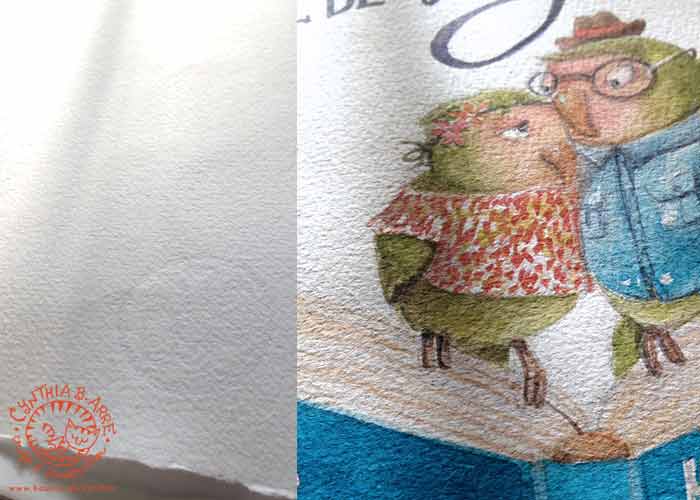
Hahnemuhle Mould-Made Watercolor Paper (Matte), 200 gsm (available at Deovir Arts)
Arnold introduced me to this paper so it was the first “fine art” paper I ever used. (I’m a bit embarrassed to admit that all of my watercolor work from years ago were done on yellow-backed illustration boards and sketch pads). Because of that, this has become my “benchmark” paper. It’s awesome for wet-on-wet painting (the paper drinks up the water & pigments without diminishing color vibrancy) and as you can see above, I can also do crisp-edged drawings on it with no problems. At 200 gsm, I avoid painting large washes though it may be possible if stretched beforehand. Mistakes are also easy to re-wet and “erase,” making it an ideal choice for beginners. It’s very economical to buy big sheets of these and tear them down to a more manageable size. The deckle edge is a nice touch and it’s inspired me to keep the torn edges when I tear it up into smaller pieces for a raw handmade look. 🙂
***
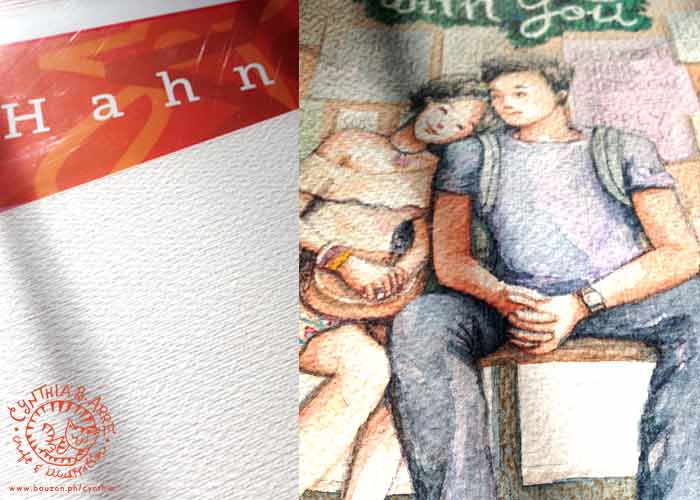
Hahnemuhle Mould-Made Watercolor Paper (Rough), 300 gsm (available at Deovir Arts)
This one comes in block form and has a rougher, slightly raised and woven texture compared to the matt variant. A block is very convenient since you can immediately apply large washes with no need for stretching. I found the weave-like texture off-putting at first since I was already used to the fine-grained fibrous texture of Hahnemuhle’s matt paper but after using this for a while. I learned to like it as well. It appears that the pigments sink and “sit” in the grooves and so deep, rich colors are preserved.
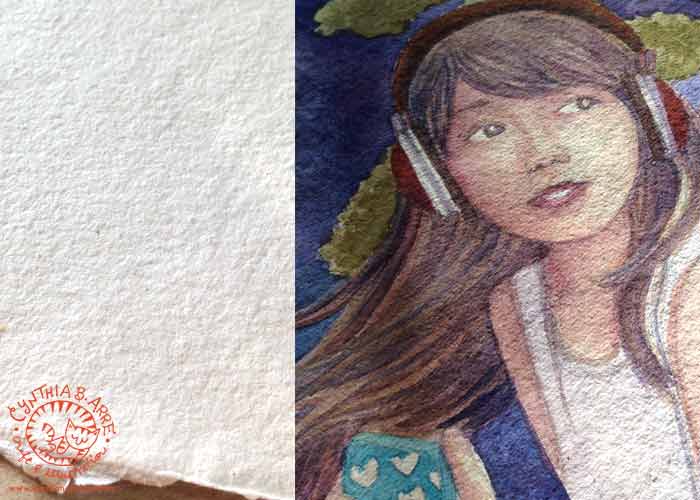
Khadi Handmade Paper 320 gsm, circle (above) and A5 (below) — (available at ArtWhale)
At 329 gsm, this paper handmade in India is thicker than all the other natural-fiber papers I’ve tried and because it’s made of long-fiber cotton rag (upcycled t-shirt cuttings, anyone?), it seems to be more absorbent than the other papers. The painting above was done on the circle variant (which reminds me of pita bread 😉 ) months ago using ShinHan Korean Colors but because the pigments were fully absorbed by the paper, it looks as if it was painted just yesterday. Also, as you can see almost the entire surface is covered in watercolor but at 320 gsm, the paper didn’t buckle much and actually stiffened a bit once the paint dried — possibly because the rag combined with the pigments.
The A5 variant (below) has a slightly finer grain. Since my first artwork is almost opaque, I tried to see how the paper react to a transparent wet-on-wet technique and it performed beyond my expectations. 🙂 The paper was able to soak in a lot of water and it never once buckled. Also, just look at how rich the colors stayed even after the paint dried (I used ShinHan PWC paints for the test below). The A5 size is perfect for portraits too and the deckle edges add a beautiful handmade touch.
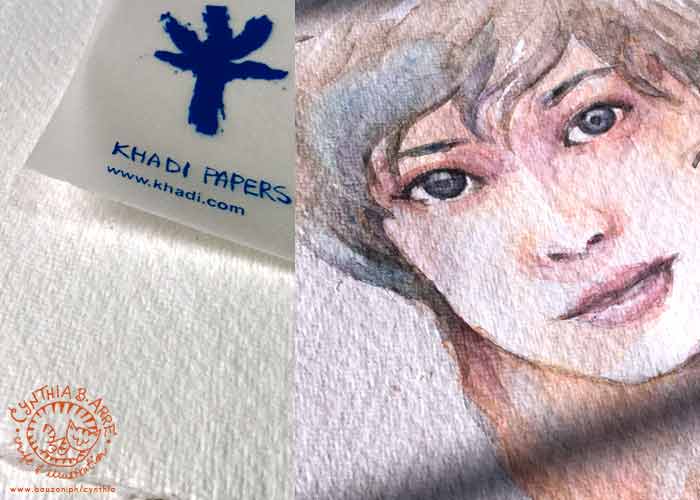
***
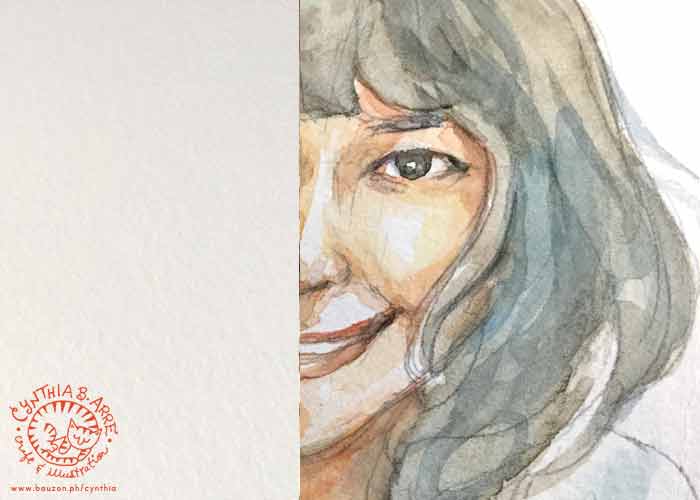
Hahnemuhle Bamboo Mixed Media Board 265 gsm (available at Deovir Arts)
This is an all-in-one artist-grade paper made from 90% bamboo fibers and 10% rag which can be used with watercolour, gouache, acrylics, colored pencils, chalk and oil pastel, stamp pad inks, etc. It comes in sheets at Deovir (for around P118 per 19″ x 25″ sheet) which is great value since you can cut it up into smaller pieces and it can handle almost any media. The surface is smooth and watercolor glides on it with ease. I like using this paper with the wet-on-dry watercolor technique since colors seems to maintain brilliancy that way.
***
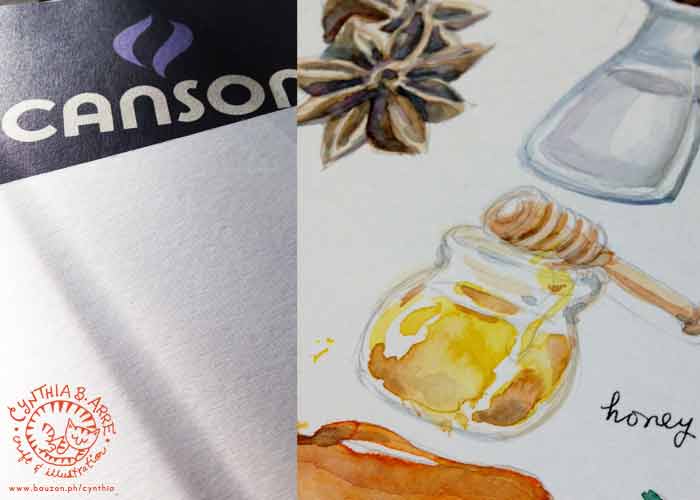
Canson Montval Torchon Watercolor Paper, 270 gsm (available at NBS and Fully Booked)
Among relatively inexpensive student-grade papers, this is the closest I’ve found that can mimic the behavior of premium watercolor paper. Made from archival cellulose, the texture is similar to that of Hahnemuhle Bamboo’s — smooth but grainy enough to absorb paint and give paintings a “watercolory” look, meaning it won’t look like the paint is just sitting on top of the paper. At 270 gsm it’s not prone to much buckling unless you’re doing heavy-duty washes. Remember though that this isn’t fine art paper and drawings might eventually fade so make sure to use this only when you will scan and digitize your work.
I would love to know what brands and kinds of paper you like using. Please do share in the comments section. 🙂
See also:
